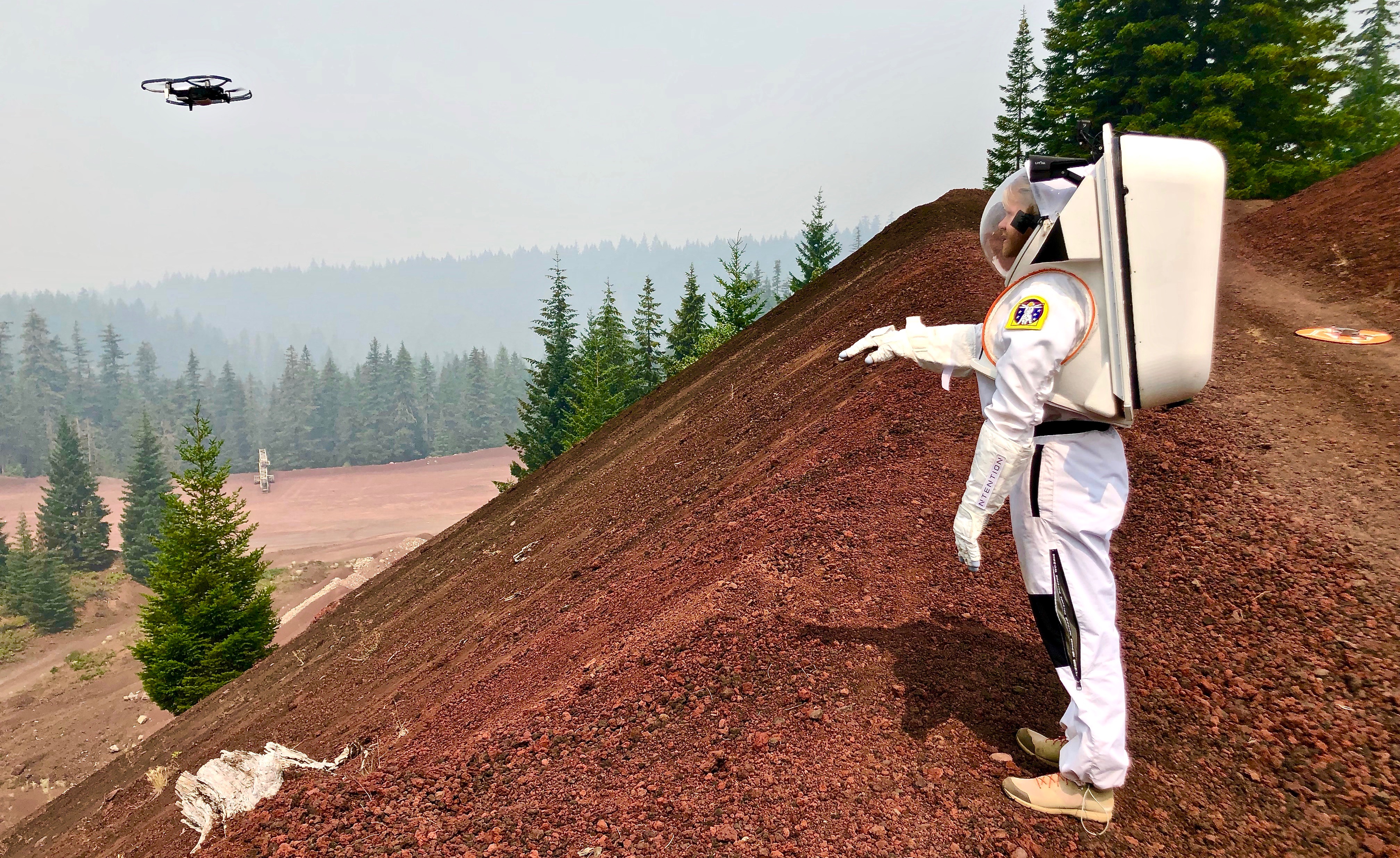
Despite the looming threat of climate change, this year continues on its inexorable march toward 2022, which is almost unbelievable to me since I swear it’s still 2020.
We also continue to make progress toward that somewhat nebulous date when NASA will launch the Artemis mission. That mission’s goal is to land the first woman and the next man on the Moon, with a landing site near the lunar south pole where accessible water ice is most likely to be found. And while we have focused mainly on the transportation to get back to the Moon, rockets and vehicles are not the only concern. Our next story takes a look at another important aspect of the mission – spacesuits.
After all, the latest SpaceX suits are cool and all, but they’re not good for wandering the surface of the Moon.
To that end, NASA’s Haughton-Mars Project in conjunction with the SETI Institute, Mars Institute, Collins Aerospace, and Ntention have been field testing some new spacesuit technologies in Oregon’s High Desert region. Some of these sites are the same sites once used by Apollo astronauts to test their own spacesuit technology and train in its usage back in the Apollo era. SETI’s Dr. Pascal Lee notes: It was exciting to be in Oregon to revisit some of the very locations where, in 1964 and 1966, the Apollo astronauts received field training in geology and tested spacesuits.
The list of testing sites included the legacy sites of Lava Butte, Big Obsidian Lava Flow, Fort Rock, Hole in the Ground, and Yapoah Lava Flow at McKenzie Pass.
Plus, the team found some more analog sites for further testing and exploration, now that we know more about the surfaces of the Moon and even Mars than we did decades ago. Those sites included Pumice Slope at Crater Lake National Park, the Painted Hills at John Day Fossil Beds National Monument, and Skylight Cave. Interestingly, that last site is a lava tube with several openings in the roof from collapses, which is great for testing a lunar lava tube analog.
The testing had the support of the United States Forest Service and National Park Service.
Now let’s talk about these new spacesuits. One of the new innovations is an integrated Information Technologies and Informatics Subsystem or IT IS designed by Collins Aerospace. The IT IS is basically a heads-up display in the spacesuit helmet that allows astronauts to track various checklists and replaces the low-tech spiral-bound notebooks that they had attached to their elbows. Additionally, the IT IS allows them to track their health and that of their fellow astronauts as well as check the status of various spacesuit systems, including power, oxygen, and water reserves. The display will also show maps and locations and allow for note-taking, sample management, and even some photography.
Talk about an all-in-one package.

It’s important that we make these advances, and as Dr. Lee goes on to explain: While real-time mission support from Earth will remain important, exploring the lunar poles, where NASA intends to land Artemis astronauts, means that direct-to-earth communications will not, at times, be possible, even via orbital relays. So we need to provide future lunar explorers with the means to safely perform more autonomous EVAs. The need for autonomy will be further compounded in the case of Mars, where communications delays will drastically limit real-time mission support from Earth.
One more new technology was tested out in Oregon – Ntention’s Astronaut Smart Glove, which had been previously tested in the field before but this time was successfully integrated with the new IT IS.
The glove allows astronauts to remotely operate robotic assistants like cranes, rovers, and drones via minimal hand gestures. That’s important because spacesuits, especially those used on the Moon, are not known for their flexibility or maneuverability. And the field test for this glove gave a demonstration of a successful rock sample collection using that remote technology. Given that the lunar south pole may not be the easiest for people to get around, the ability to use a rover and direct it from the field, so to speak, is a huge stride in making the Artemis mission successful.
We’ll link to more amazing images of the new spacesuit in action in our show notes at DailySpace.org.
More Information
SETI Institute press release




 Join the Crew!
Join the Crew!
 Escape Velocity Space News
Escape Velocity Space News
0 Comments